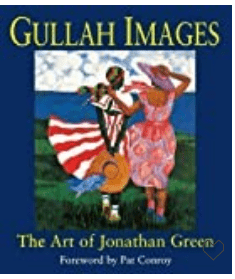
In Georgetown County, South Carolina rests an island time has not forgotten or forsaken with a handful of residents that put up the good fight to preserve its autonomy and charm, while fighting for basic needs like telephone lines, electricity, and running water in the 1960s. They even had to fight for their own voting precinct to exercise their right to vote. Sandy Island is probably the least known of the Gullah communities, but something about its spirit and the spirit of the people help it survive throughout the generations.
Transportation on and off the island was complicated, and as long time resident Laura Herriott said in an interview, if residents needed something from the grocery store, they had to row a boat up a creek. Some things have changed and to show off the beauty of the island, Rommy L. Pyatt, owner of Tours de Sandy Island has created a guided tour for visitors.
Sandy Island is located where the Waccamaw River meets the Great Pee Dee River. Pyatt’s tour provides traditional sightseeing mixed with historical insight. Sandy Island is approximately 12,000 acres with 3,000 acres of private property belonging to the local residents – descendants of enslaved Africans brought there to cultivate rice. The Tours de Sandy Island site states, “The remaining 9,000-acres are a wildlife preserve overseen by the Nature Conservancy.”

Pyatt’s General Store | Tours de Sandy Island
Pyatt’s tour is two hours long and begins on the mainland. It is here where you will board our newly acquired Prince Washington school boat for a brief ride to Pyatt’s General Store, a family-owned business that opened in 1986. Tourists will find a small selection of African heritage gifts, Gullah Sweetgrass baskets, a few necessities, and the only public restroom on the Island.

New Bethel Baptist, Sandy Island | SC State Library
A 21-passenger van is used to explore the Island. The website states, “Our tour will take us past the best and worst of the Island—beautiful, well-maintained homes, and those that are abandoned or in serious disrepair.” Pyatt will show visitors the Sandy Island firehouse, with its one operational fire truck, several old gravesites, the only church on the island – New Bethel Baptist Church, founded in 1880 – and then onward to the community center and library, which once served as the Island’s school.
Prince Washington, Sandy Island, SC, 1900s, Contributed by Emanuel Supreme Page | International African American Museum
The Tours de Sandy Island boat is named after Prince Washington, the great-great grandson of the community’s first Black landowner, Phillip Washington. Prince Washington was an influential member of the Sandy Island community who helped the island get electricity. He was also an advocate for the community’s best interests, when dealing with outside would-be developers.
To book a tour, visit Tours de Sandy Island’s website. To learn more about Sandy Island, visit the oral history project At Low Tide: Voices of Sandy Island. And if you’re interested in staying on the island, visit Wilma’s Cottage, a bed and breakfast.


































































